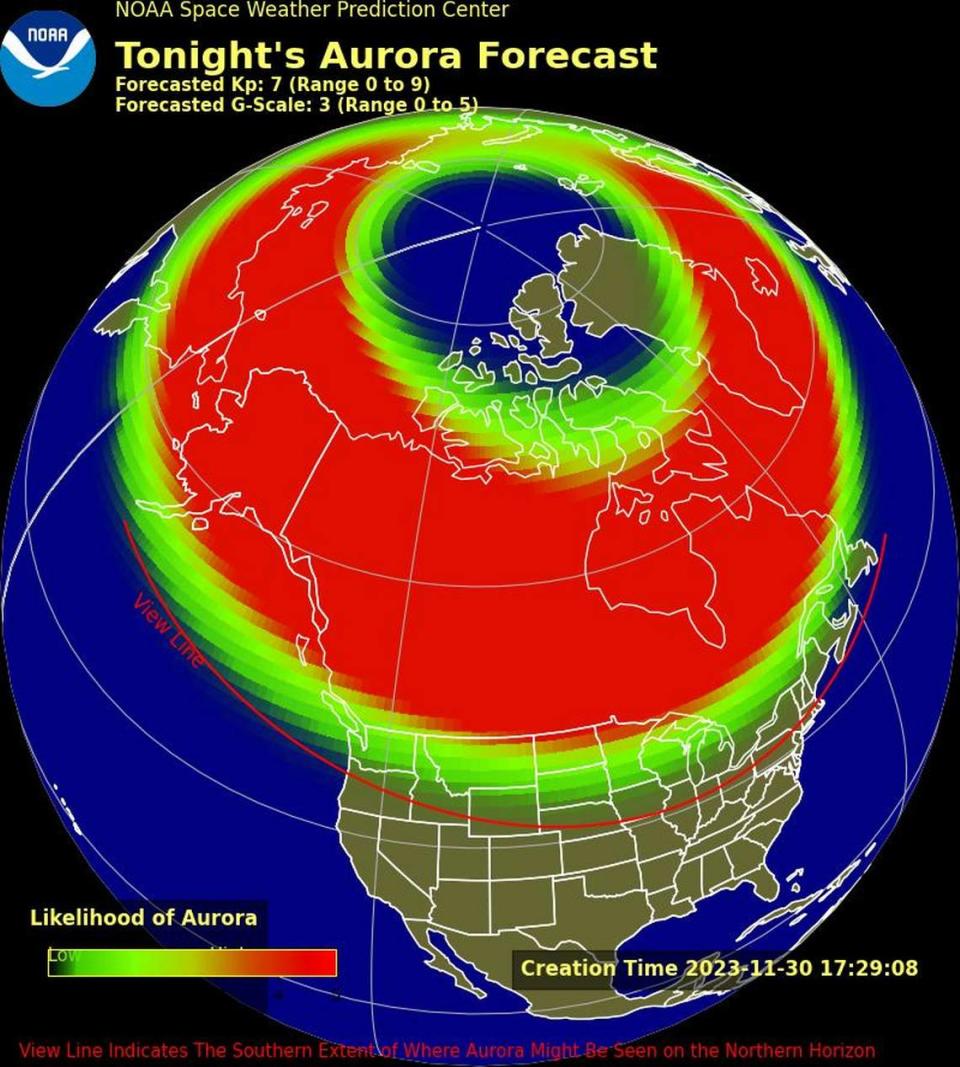Pennsylvania might catch a glimpse of the northern lights this week. Here’s how to watch
A recent series of solar flares could give some Pennsylvanians a rare glimpse of the northern lights this week.
According to the National Oceanic and Atmospheric Administration’s Space Weather Prediction Center, four eruptions on the surface of the sun (coronal mass ejections, or CMEs) produced effects that will be visible above parts of the U.S. this week. The space weather-fueled northern lights are expected to be strongest Thursday night heading into Friday.
Here’s what to know if you hope to see the northern lights in Pennsylvania this week.
What causes the northern lights?
Essentially, CMEs are explosions of magnetic material and plasma directly from the ever-active sun. According to NOAA, these phenomena can affect navigation, communication and radio signals and even create the auroras we see by forming currents in Earth’s natural magnetic fields that interact with oxygen and nitrogen at the North and South poles.
Much like hurricanes and tornadoes, geomagnetic storms are described through a numeric scale to categorize their strength. A G1-rated storm, for example, is considered minor and usually produces auroras visible in the northern U.S., particularly Maine and Michigan’s upper peninsula. Each bump in the scale describes a more powerful and visible storm, ending with a G5 storm, which can produce auroras visible as far south as Florida or southern Texas under the right conditions.
According to the Space Weather Prediction Center, roughly 1,700 G1 storms occur per cycle, or the 11-year period during which the sun effectively flips its magnetic poles. G4 storms are observed about 100 times per cycle, but G5s are rare enough to be spotted just about four times in the 11-year solar cycle.
Minor and moderate G1 and G2 storms can produce non-critical damage and annoyances to power systems and technology, including grid fluctuations and transformer damage. More severe and extreme storms could cause electrical blackouts and disrupt connections to satellites in space.
Can I see aurora borealis in Pennsylvania?
You might be able to catch the northern lights from Pennsylvania if this week’s solar storms reach the G3 level, which occurs about 175 times per solar cycle. The Space Weather Prediction Agency says such a storm is likely this week.
Current estimates from the Space Weather Prediction Agency suggest more northern states like Alaska, Montana, Minnesota and North Dakota have the highest chances of seeing the northern lights Thursday night. Favorable conditions might push the lights farther south, allowing viewers in Washington and Oregon to Ohio and Pennsylvania to catch them before they’re gone.
Below is a look at the latest aurora forecast from the Space Weather Prediction Center. Areas shaded in red have the greatest chance of seeing the auroras, while those in green are less likely. Areas within the red line can still see the northern lights if favorable conditions expand their scope.

Friday’s aurora forecast pushes the lights farther north, leaving less of a chance for more southern states to catch a glimpse.
What’s the best way to watch the northern lights?
Here are a few tips for finding the best conditions to view the northern lights, according to the Space Weather Prediction Center:
Find a dark, outdoor place away from lights sources. A more full moon might diminish the apparent brightness of the aurora.
Keep an eye on the time. The strongest auroras are usually seen within an hour or two of midnight (so, between about 10 p.m. and 2 a.m.).
You can visit spaceweather.gov to learn more about the northern lights, including day-by-day forecasts of visible auroras and interactive displays and tutorials.

